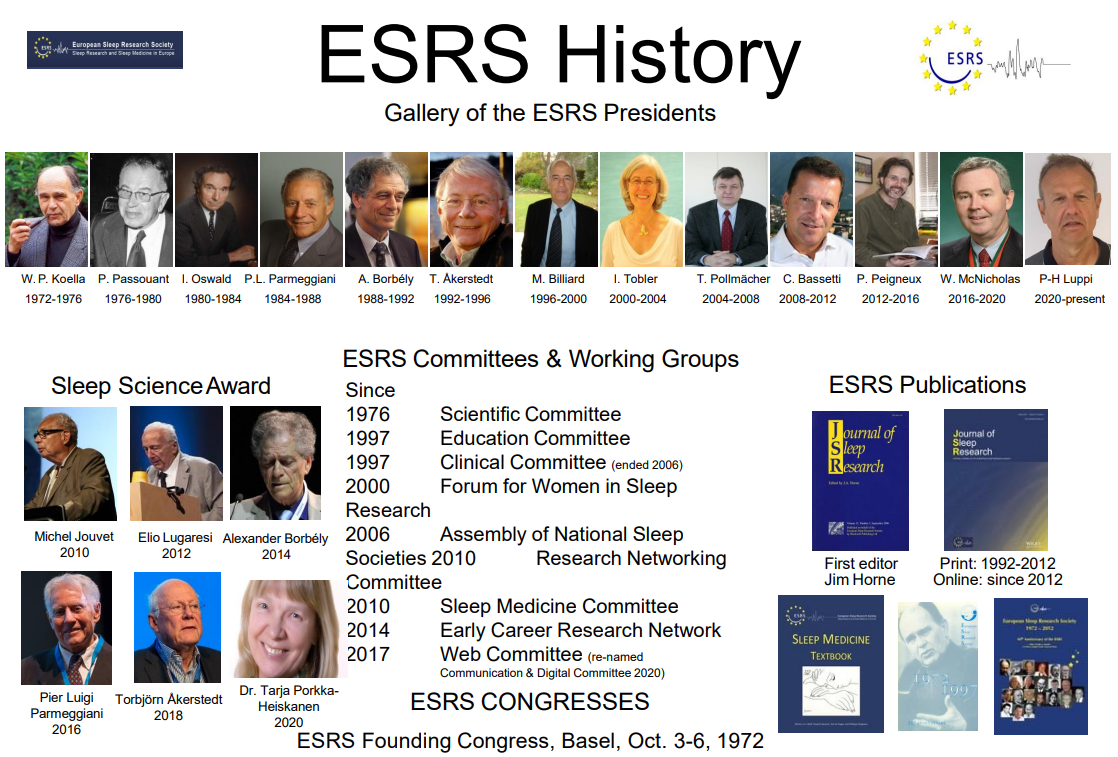Sleep Science Friday: EIN Meeting Report
25 June 2021
On the 11th of June, the “European Insomnia Network meeting” took place to discuss the latest news in insomnia research. Due to ongoing pandemic-related restrictions the meeting was held online. Regardless, it was an informative and insightful nearly 7-hour long session with over 100 scientists participating from many different countries across Europe and the world. In total 25 presentations were given in four respective sessions on the following topics: general new findings; insomnia and emotions; methodology, measurements, and models and of course the clinical aspect of treating insomnia with cognitive behavioural therapy for insomnia (CBT-I) in a classical or digital setting.
Here you can find a selection of key learnings from the sessions:
Session 1: Basics
The treatment of insomnia might be a preventive strategy for somatic and mental disorders, however more research is needed to support this.
REM sleep plays an important role in insomnia disorder e.g., restless REM sleep seems to impede overnight adaptation to emotional distress and evidence suggest that REM sleep in insomnia is linked to altered subjective sleep perception through REM sleep instability.
The prevalence of insomnia following mild traumatic injuries is higher than in the general population.
Session 2: Insomnia and emotions
Individuals show more amygdala and more reward network connectivity than healthy controls when viewing humorous movies.
Insomnia patients show fewer positive emotions and more negative emotions over the day compared to healthy controls that sleep normal but also compared to healthy but sleep deprived individuals.
Session 3: Methodology, measurements, and models
Sleep duration measured subjectively with one single item highly correlates with sleep duration measured with sleep diary but not with objectively with PSG measured sleep duration.
Judgement of sleep quality changes over the course of the day in most people. This change is predicted by physical activity.
Session 4: CBT-I: classic and digital
Two mechanisms seem to be active in the CBT-I component “sleep restriction”: sleep pressure increases, and arousal decreases.
Chronotherapeutical methods can be implemented in psychiatric institutions to be used as a supportive and stabilizing element for inpatient populations e.g., with bipolar disorder or suicidal ideation.
After being deprived from scientific exchange for approximately one year due to the global covid-19 pandemic, with meetings in person and at conferences hardly being possible, fruitful discussions emerged on all topics even though the meeting was still digital and time for discussion was planned quite concise. Everyone was happy to get in contact again.
This report was provided by PhD student Lisa Steinmetz of the Department of Psychiatry and Psychotherapy at the University Medical Center Freiburg.
The meeting was a raving success based on the feedback of participants. In the words of one such participant Dr. Michael Perlis:
“The EIN meeting is always an invaluable way to be appraised of what’s new. This year’s meeting, while regrettably virtual, was as informative as always. The data blitz presentations were very engaging and informative. Thank you presenters! Most of all… Thank you Dieter!! Thank you for thinking to create the EIN, doing the hard work of fielding the meetings and making sure it’s the latest and best of insomnia science.”
Recent publications from ESRS members:
- Filardi et al. (2021). The importance of social zeitgeber in paediatric type 1 narcolepsy: What we can learn from the COVID-19 restrictions adopted in Italy? J Sleep Res.
- Zinchuk et al. (2021). Physiological Traits and Adherence to Therapy of Sleep Apnea in Individuals with Coronary Artery Disease. Am J Respir Crit Care Med.
- Sutherland et al. (2021). Circadian blood pressure profile and blood pressure changes following oral appliance therapy for obstructive sleep apnoea. J Hypertens.
- Riccitelli et al. (2021). Contribution of sleep disturbances to fatigue in ms: a prospective study using clinical and polysomnographic parameters. Eur J Neurol.
- Eskildsen et al. (2021). Impaired cerebral microcirculation in isolated REM sleep behaviour disorder. Brain.
- Albakri et al. (2021) Sleep Health Promotion Interventions and Their Effectiveness: An Umbrella Review. Int. J. Environ. Res. Public Health.
- Heinrich et al. (2021). Disparate effects of hormones and vigabatrin on sleep slow waves in patients with West syndrome – An indication of their mode of action? J Sleep Res.
- Hvolby et al. (2021). Cumulative incidence and relative risk of sleep problems among children and adolescents with newly diagnosed neurodevelopmental disorders: A nationwide register-based study. J Sleep Res.
- Baumann-Vogel et al. (2021). Extending sleep to confirm insufficient sleep syndrome is challenging. J Sleep Res.
Just published an article? Want your research to be featured? Saw something interesting? Contact us at ESRS…
ESRS Reminders
Sleep Deprivation Webinar
On Friday, 9-July 2021 between 10:00 and 11:30 CET, the ESRS will host its 2nd LIVE Webinar on the Adverse Effects of Sleep Deprivation. This will be chaired by Dr. Marta Gonçalves who previously led the charge on the Wake-Up Bus initiative in 2014. She will be joined by fellow colleagues Dr. Bárbara Strazisar and Prof. Torbjörn Åkerstedt. They will be presenting on various aspects of the adverse effects of sleep deprivation including its impact on academic performance and flight time regulation respectively.
RNC Call for New Effective Members
This is the final reminder to submit your application to become an effective member of the Research Network Committee (RNC).
They’re seeking a Project Manager to investigate the possibilities and eventually set up an ESRS Foundation, in line with their mission to promote collaborations and information exchange between different fields within sleep research.
Applications will be accepted until 30-June. Here’s more information on the project and how to apply.



